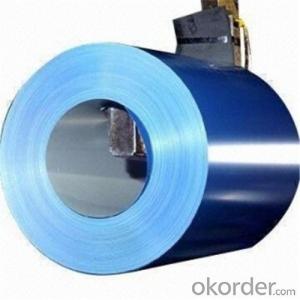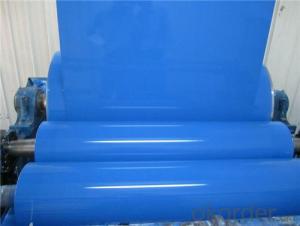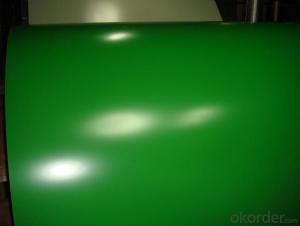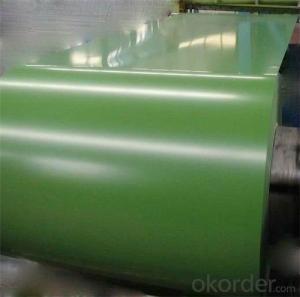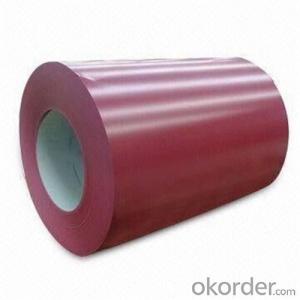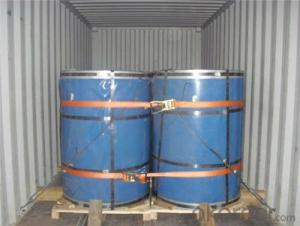BMP Z65 Rolled Steel Coil for Sandwich Panel
- Loading Port:
- Tianjin
- Payment Terms:
- TT OR LC
- Min Order Qty:
- 100 m.t.
- Supply Capability:
- 30000 m.t./month
OKorder Service Pledge
OKorder Financial Service
You Might Also Like
Structure of BMP Z65 Rolled Steel Coil for Sandwich Panel

Main Feature of BMP Z65 Rolled Steel Coil for Sandwich Panel
1.Corrosion resistance: It mainly depends on the aluminum protection. When the zinc being worn, the aluminum will form a dense layer of aluminum oxide, resist corrosion material to prevent further corrosion inside.
2. Heat resistance: Aluminum zinc alloy steel sheet has excellent heat resistance, can withstand high temperatures over 300 centigrade, and is similar with aluminized steel high temperature oxidation resistance. It often used in chimney pipes, ovens, fluorescent lighting device and the device cover.
3. Heat reflective: Galvanized steel plate heat-reflective high rate is twice as galvanized steel, often used to make insulation materials.
4. Economy: Because density of 55% AL-Zn is smaller than the density of Zn, so in the same weight and thickness of Galvanized zinc layer, aluminum-zinc steel plate is larger area more than 3% of galvanized steel sheet.
Applications of BMP Z65 Rolled Steel Coil for Sandwich Panel
1. Construction and building: roofing; ventilating duct; handrail; partition panel;etc.
2. Electric appliance: refrigerator; washing machine; refrigerator; DVD;etc.
3.Transportation: oil tank; gas tank;pentane tank; road sign; etc.
4.Agriculture:barn; etc.
5.Others:vending machine; game machine; etc.
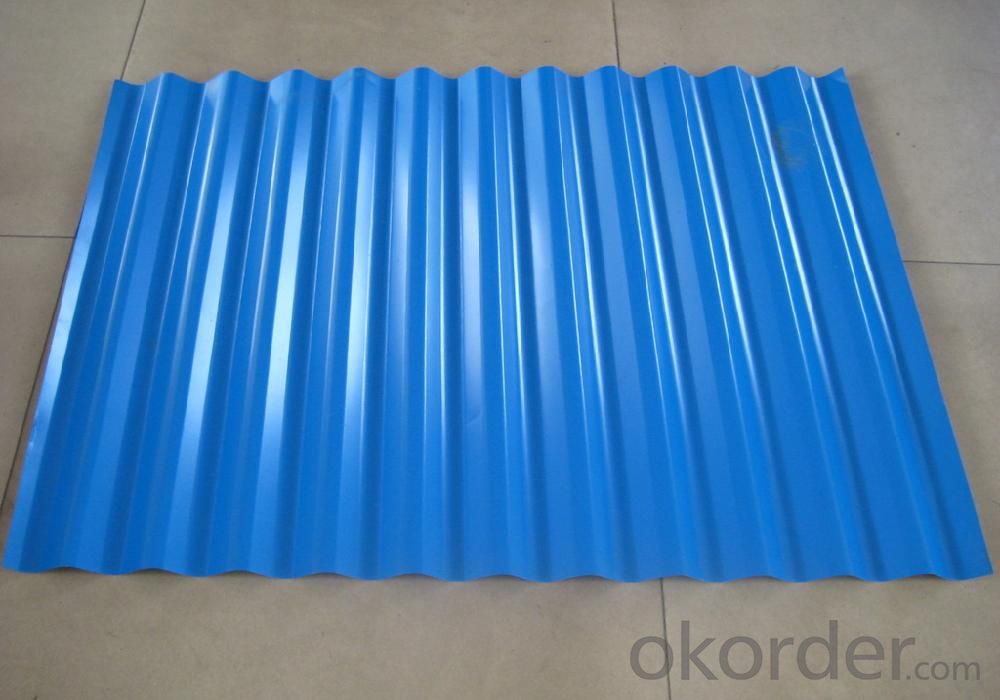
Specifications of BMP Z65 Rolled Steel Coil for Sandwich Panel
Product | BMP Z65 Rolled Steel Coil for Sandwich Panel |
Material Grade | SGCC / SGCH / DX51D+AZ, etc |
Thickness | 0.6-3.0mm |
Width | 500-1500mm |
Tolerance | Thickness: +/-0.02mm , Width:+/-2mm |
Zinc-coating | Z30-150g/m2 |
Technique | Raw material: Hot rolled steel coil --> Cold rolled_>hot dipped galvalume |
Surface | Dried, Chromated, Unoiled |
Spangle | Regular spangle , small spangle, zero spangle |
ID | 508MM 610MM |
Coil weight | 1-25MT |
Export package | Cardboard inner sleeves, Waterproof paper, galvanized steel covered and steel strip packed |
Packing of BMP Z65 Rolled Steel Coil for Sandwich Panel
Package: Sea worthy Export Packing Standard export and seaworthy packing. (waterproof paper and metal sheet protection with fluted rings at inner and outer edges, 4 eye bands and 4 circumferential bands fasten the coil)
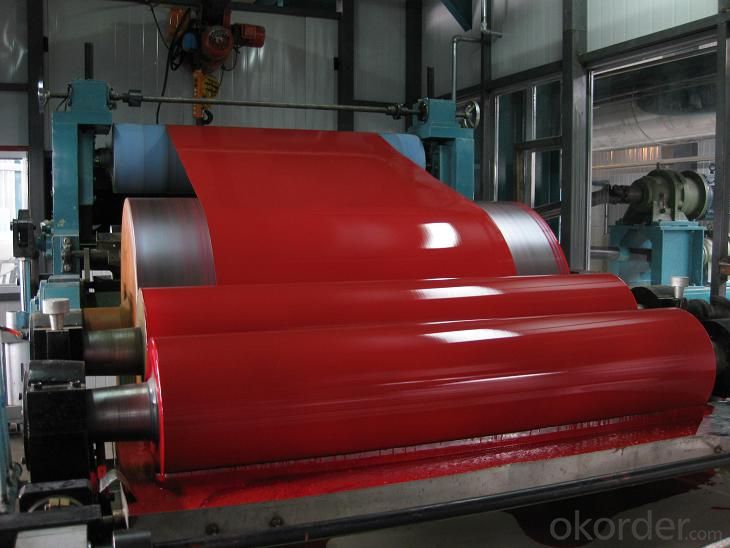
FAQ of BMP Z65 Rolled Steel Coil for Sandwich Panel
We have organized several common questions for our clients,may help you sincerely:
1. What is the minimum order quantity ?
Our MOQ is 50mt for each size. And we will consider to give more discount if you make big order like 1000 tons and more. Further more, the more appropriate payment term your offer the better price we can provide.
2. How long can we receive the product after purchase?
Our delivery time is around 30 day after order confirmed.
3. What is your payment?
We accept L/C at sight, T/T, L/C 90days
4.What is your width range?
Our general width range is 600-1250mm(900mm, 1215mm, 1250mm, 1000mm the most common), if other width is requested, we can also supply.
- Q:I do a lot of scrapping and would like to be able to separate stainless steel from regular steel. The magnet test doesn't always work since stainless can be magnetic, but what are some ways that I can for sure tell the difference? Or even something like a sound that they make that may help me to tell the difference.
- Stainless steel uses chromium in its mixture to thwart the affects of corrosion. General steel, or carbon steel, is generally almost completely iron and is used for far greater applications than stainless steel. Stainless steel is used mostly in kitchen appliances, utensils, etc... The best thing I can come up with is to find a way to measure the chromium content of the steel you are looking at. If it's around 3% chromium, it's probably standard steel. If it's somewhere between 10-15% chromium it's probably stainless steel (or even 4% plus). I can't tell you a fast and quick way to test the steel because from my research, it appears there are as many grades and allows of steel as there are uses for steel! There is one test I've seen for home testing surgical steel which is a higher grade stainless steel, that is to put scotch tape on one section of material then soak it in water for a 24 hour period, then let it air dry for 24 hours. You remove the tape and lightly polish the exposed areas to see if there was any discoloration or pitting on the exposed area. This test is mainly for surgical steel jewelry, however stainless steel is supposed to resist rusting more than standard steel, hence it might work for other steel types as well. You may have to read some of the other links below to get some other ideas on how you can test steel to see if it is stainless.
- Q:How are steel coils used in the energy sector?
- Steel coils are used in the energy sector primarily for the construction of power plants and transmission infrastructure. They are used to manufacture various components, such as pipes, tanks, and structures, which are essential for the generation, distribution, and storage of energy.
- Q:What types of steel are used in steel coils?
- There are various types of steel that are commonly used in steel coils, including carbon steel, stainless steel, and alloy steel.
- Q:Can steel coils be coated with copper?
- Yes, steel coils can be coated with copper. This process, known as copper coating or copper plating, involves applying a thin layer of copper onto the surface of the steel coils to enhance their corrosion resistance, conductivity, and aesthetics.
- Q:For some reason, if you rub iron oxide or lodestone (both very crumbly, dark, mineral-like materials) into soft, unhardened steel, their particles actually get stuck into the surface of the steel (that is, darkening it). My question is, how does this work? How come iron oxide and lodestone can get stuck, and how come other materials (like silicone carbide, for example) do not?My second question is, are there any materials that can get stuck into steel, that is also blue in color, and how would I best obtain it?
- Funny! 100!
- Q:What are the quality control measures for steel coil production?
- To ensure that the final product meets the necessary standards and specifications, it is crucial to have quality control measures in place for steel coil production. Here are several commonly used measures in the process: 1. Inspection of Raw Materials: Prior to production, a thorough examination of the chemical composition, mechanical properties, and surface defects of materials like steel billets is conducted. This guarantees that only high-quality materials are used. 2. Control of Processes: Critical parameters such as temperature, rolling speed, tension, and lubrication are continuously monitored and controlled throughout production. Regular checks and adjustments are made to ensure that these parameters fall within the specified tolerances. 3. Assessment of Dimensions and Surfaces: Steel coils undergo stringent inspections to ensure they meet the required thickness, width, and length specifications. Surface defects like scratches, pits, or dents are meticulously examined and minimized to meet quality standards. 4. Mechanical Testing: Regular testing of mechanical properties like tensile strength, yield strength, elongation, and hardness is carried out. These tests are vital in ensuring that the steel coils possess the desired strength and performance characteristics. 5. Visual Inspection: Trained inspectors conduct thorough visual inspections to identify any visible defects or irregularities in the steel coils. Issues such as cracks, corrosion, or uneven surfaces are detected, and necessary actions are taken to rectify or reject faulty coils. 6. Non-Destructive Testing: Methods like ultrasonic testing, magnetic particle testing, or eddy current testing are often employed to detect internal defects like voids, inclusions, or discontinuities that may impact the quality of the steel coils. 7. Documentation and Traceability: Proper documentation and traceability of all quality control measures are maintained throughout the production process. This includes recording test results, inspection reports, and other relevant data to ensure transparency and accountability. 8. Continuous Improvement: Quality control measures in steel coil production are not static but constantly evolving. Regular audits, customer feedback, and analysis of process data are utilized to identify areas for improvement and implement corrective actions to enhance product quality. By implementing these quality control measures, steel coil manufacturers can guarantee that the final product meets the necessary specifications, performs reliably, and achieves customer satisfaction.
- Q:I am getting a barn soon and I was debating between wood, and steel. I think steel would look nicer [painted of course] and I was wondering which is cheaper. Any extra info would be great. Thanks x
- Steel barns are much cheaper, but do require more insulation (they get extremely hot in summer and extremely cold in winter w/o insulation), and they have little to no maintinence. in my opinion though, a better-built wood barn is by far the better choice in the long run. They are much more sturdy, more visually appealing (to me), and if kept up well, will last much longer than a steel barn will. I also like that with a wood barn, during rain/hail/etc.etc. you don't have a deafening clatter that is unavoidable with steel barns.
- Q:Hi, I need to know why stainless steel is rust proof please tell me its for my science project. :)
- Stainless steel is characterized by the presence of chromium. Chromium oxidizes like aluminium does, by passivation, that is, it forms a though oxide layer that sticks to the metal underneath and protects it. On the other hand, iron oxidizes by turning into rust, which is a brittle material that flakes off, exposing the metal under for more oxidation. Now, what happens when you have a metal that is made of both iron and chromium? Any iron on the surface will rust and flake off (at the atomic level, so do not expect to see much rusting) until the surface is a pure chromium layer (again, we are talking about a layer that is a few atoms thick) and that chromium will oxidize but stay put. Then rust then has no way of getting deeper, and the metal will remain clean.
- Q:I have a need to connect various stainless steel tubes and fitting together and was wondering how to do it. I know a TIG welder is an option but have heard rumors that there is a way to solder it in much the same way you affix copper pipe. Perhaps with higher heat and different flux. I need step by step and maybe suppliers of the materials. Thanks in advance and please I do not need the call a plumber answers as I've gotten in the past
- Soft Soldering All grades of stainless steel can be soldered with lead-tin soft solder. Leaded solders should not be used when the product being soldered is used for food processing, serving or transport. Soldered joints are relatively weak compared to the strength of the steel, so this method should not be used where the mechanical strength is dependent upon the soldered joint. Strength can be added if the edges are first lock-seamed, spot welded or riveted. In general, welding is always preferable to soldering. Recommended procedure for soldering: · 1. The steel surfaces must be clean and free of oxidation. · 2. A rough surface improves adherence of the solder, so roughening with grinding wheel, file or coarse abrasive paper is recommended. · 3. Use a phosphoric acid based flux. Hydrochloric acid based fluxes require neutralising after soldering as any remnant traces will be highly corrosive to the steel. Hydrochloric acid based fluxes are not recommended for soldering of stainless steels. · 4. Flux should be applied with a brush, to only the area being soldered. · 5. A large, hot iron is recommended. Use the same temperature as for carbon steel, but a longer time will be required because of stainless steel's low thermal conductivity. · 6. Any type of solder can be used, but at least 50% tin is recommended. Solder with 60-70% tin and 30-40% lead has a better colour match and greater strength.
- Q:What are the common methods of inspecting steel coils for defects?
- Inspecting steel coils for defects involves several commonly used methods. These methods encompass visual inspection, ultrasonic testing, magnetic particle inspection, and eddy current testing. Visual inspection, the most basic method, entails physically examining the steel coil's surface for noticeable defects like cracks, dents, or irregularities. Typically, this initial step in the inspection process promptly identifies any obvious defects. Ultrasonic testing, a more advanced method, employs high-frequency sound waves to detect defects within the steel coil. Ultrasonic waves are transmitted into the coil via a probe, and any internal flaws or defects reflect the waves back to the probe. This method effectively identifies defects such as voids, cracks, or inclusions. Magnetic particle inspection is another commonly utilized method. It involves magnetizing the coil and applying iron particles to the surface. Defects or cracks disrupt the magnetic field, attracting the iron particles and making them visible. This method is particularly effective for surface cracks or defects. Eddy current testing is a non-destructive method utilizing electromagnetic induction to detect defects in the steel coil. By generating an alternating magnetic field using a probe, any changes in the material's electrical conductivity or magnetic permeability due to defects generate eddy currents. These eddy currents can be measured and analyzed to identify defects like cracks, voids, or changes in material properties. In summary, these common methods offer varying levels of accuracy and sensitivity in inspecting steel coils for defects, ensuring their quality and integrity. The choice of method depends on factors such as the type and size of defects to be detected, the required level of inspection accuracy, and the time and cost limitations of the inspection process.
1. Manufacturer Overview |
|
|---|---|
| Location | |
| Year Established | |
| Annual Output Value | |
| Main Markets | |
| Company Certifications | |
2. Manufacturer Certificates |
|
|---|---|
| a) Certification Name | |
| Range | |
| Reference | |
| Validity Period | |
3. Manufacturer Capability |
|
|---|---|
| a)Trade Capacity | |
| Nearest Port | |
| Export Percentage | |
| No.of Employees in Trade Department | |
| Language Spoken: | |
| b)Factory Information | |
| Factory Size: | |
| No. of Production Lines | |
| Contract Manufacturing | |
| Product Price Range | |
Send your message to us
BMP Z65 Rolled Steel Coil for Sandwich Panel
- Loading Port:
- Tianjin
- Payment Terms:
- TT OR LC
- Min Order Qty:
- 100 m.t.
- Supply Capability:
- 30000 m.t./month
OKorder Service Pledge
OKorder Financial Service
Similar products
New products
Hot products
Related keywords
